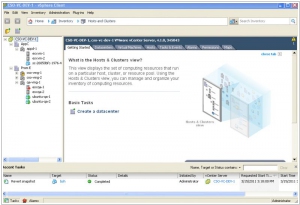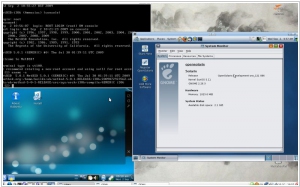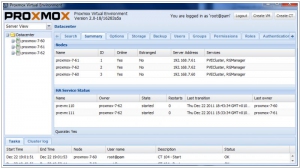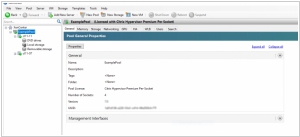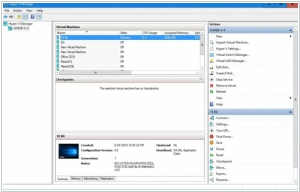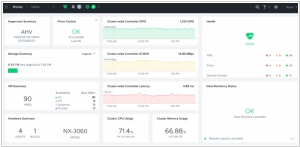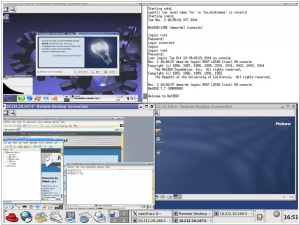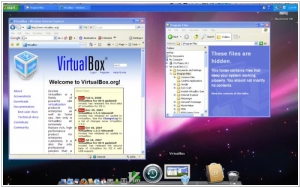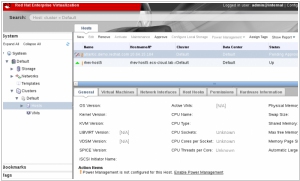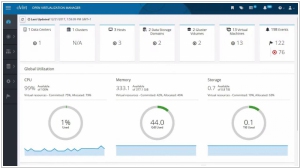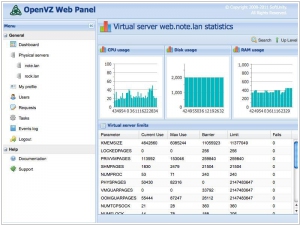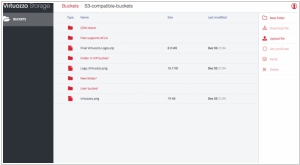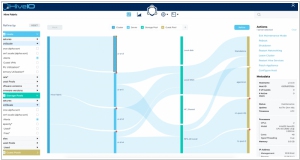Top 10 Server Virtualization platforms
February 03, 2024 | Editor: Michael Stromann
16
Server virtualization platforms allow to setup virtual servers with needed operation system, port and run business applications. They also allow to create virtual desktop infrastructure and software-defined storage.
1
Build your own cloud infrastructure in your datacenter and remote sites on VMware vSphere the world’s leading server virtualization platform. Virtualize your x86 server resources and aggregate them into logical pools for allocation of multiple workloads. Get network services optimized for the virtual environment, along with simplified administration and management. Reduce the complexity of back-end storage systems and enable the most efficient storage utilization in cloud infrastructures.
2
KVM (for Kernel-based Virtual Machine) is a full virtualization solution for Linux on x86 hardware containing virtualization extensions (Intel VT or AMD-V). It consists of a loadable kernel module, kvm.ko, that provides the core virtualization infrastructure and a processor specific module, kvm-intel.ko or kvm-amd.ko. KVM also requires a modified QEMU although work is underway to get the required changes upstream.
3
Proxmox Virtual Environment is a complete server virtualization management solution, based on KVM virtualization and containers. Powerful and easy to use - Complete server virtualization management with KVM and containers.
4
Citrix Hypervisor (formerly Citrix XenServer) is a leading virtualization management platform optimized for application, desktop and server virtualization infrastructures. Consolidation and containment of workloads on Citrix Hypervisor enables organizations of any vertical or size to transform their business IT compute infrastructures.
5
Microsoft Hyper-V provides enterprise-class virtualization for your datacenter and hybrid cloud. Bolster IT efficiency and flexibility with the faster application deployment and maintenance that Microsoft virtualization solutions deliver. Reduce costs by consolidating more workloads on fewer servers and increase agility using the same virtualization platform on-premises and in the cloud.
6
The industry’s most popular hyperconverged infrastructure (HCI) solution. Effortlessly leverage cloud-like agility and ease of use, coupled with on-premises security and control, as you leave behind the complexity and cost of legacy solutions.
7
Xen Project is a type-1 hypervisor, providing services that allow multiple computer operating systems to execute on the same computer hardware concurrently.
8
Oracle VirtualBox is a powerful virtualization product for enterprise as well as home use. Not only is VirtualBox an extremely feature rich, high performance product for enterprise customers, it is also the only professional solution that is freely available as Open Source Software under the terms of the GNU General Public License (GPL) version 2. See "About VirtualBox" for an introduction.
9
Red Hat Virtualization is an open, software-defined platform that virtualizes Linux and Microsoft Windows workloads. Built on Red Hat Enterprise Linux and the Kernel-based Virtual Machine (KVM), it features management tools that virtualize resources, processes, and applications—giving you a stable foundation for a cloud-native and containerized future.
11
OpenVZ is container-based virtualization for Linux. OpenVZ creates multiple secure, isolated Linux containers (otherwise known as VEs or VPSs) on a single physical server enabling better server utilization and ensuring that applications do not conflict. Each container performs and executes exactly like a stand-alone server; a container can be rebooted independently and have root access, users, IP addresses, memory, processes, files, applications, system libraries and configuration files.
12
Virtuozzo Containers is an operating system virtualization solution that maximizes your investment in server hardware. Virtuozzo Containers is uniquely suited to Cloud server virtualization, enabling near instant provisioning and on-the-fly modification of hosting and Cloud server plans while delivering maximum density, cost efficiency and application performance.
13
HiveIO's Hive Fabric enables customers to deliver virtual desktops, virtual servers, and software defined storage, in a single install, within 45 minutes, and without the need for specialists.
Latest news about Server Virtualization platforms
2022. Broadcom to acquire VMware in massive $61B deal
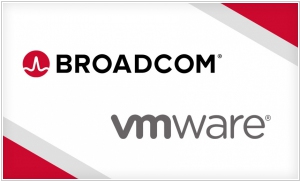
Broadcom has made a staggering $61 billion deal to acquire the virtualization giant VMware. VMware, which was previously spun out from Dell last year, offers more than just core virtualization technology, which is the foundation of the company. Broadcom will also gain other components that it has acquired over time to expand its offerings, such as Heptio for containerization and Pivotal, a provider of support services for companies transitioning to modern technology. Additionally, Broadcom acquired security company Carbon Black when it purchased Pivotal. This acquisition adds to Broadcom's previous investments, including the $18 billion spent in 2018 to acquire legacy enterprise software company CA Technologies, and another $11 billion a year later for Symantec's legacy security business.
2022. Citrix to be acquired for $16.5B, merged with Tibco
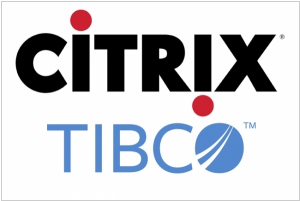
Citrix, a well-established player in virtualization technology that has been gradually transitioning into the realm of cloud computing, is set to be acquired by private equity firms Vista Equity Partners and Evergreen Coast Capital for a substantial sum of $16.5 billion. Vista's strategic plan involves merging Citrix with Tibco, which it had previously acquired in 2014 for $4.3 billion. Notably, Citrix had also recently made a significant acquisition by purchasing the project management platform Wrike for $2.25 billion. By integrating Wrike with TIBCO's advanced analytics software, Citrix aims to provide users with real-time access to faster and more intelligent insights derived from the ever-increasing volumes of available data. This acquisition marks a significant move in the evolution of Citrix's cloud computing capabilities and positions the company for further growth and innovation in the market.
2021. Microsoft launches Windows 365 - simple virtual desktop service
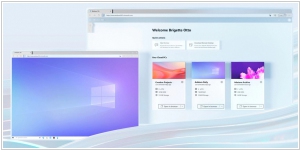
Microsoft has introduced Windows 365 today, a new service designed to enable businesses to effortlessly provide their employees with access to a cloud-based Windows 10 desktop (with Windows 11 support once it becomes generally available). While Microsoft already offers Azure Virtual Desktop, which grants businesses the ability to offer cloud-based Windows PCs to their employees, Windows 365 sets itself apart by offering a much simpler user experience without the complexities associated with setting up a complete Azure Virtual Desktop environment in the Azure cloud. Targeted towards smaller companies, Windows 365 is conveniently accessible through a straightforward subscription service.
2020. Microsoft makes it easier to get started with Windows Virtual Desktops
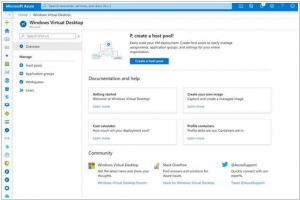
Windows Virtual Desktop, Microsoft's service designed to provide employees with access to a virtualized desktop environment on Azure, has introduced a new and improved management experience to simplify administrative tasks. This update aims to streamline the initial setup process for administrators, making it more convenient to get started with the service. Alongside enhancing the management experience, Microsoft is introducing a new capability that enables the use of Microsoft Teams for video meetings within these virtual desktop environments. This functionality, known as 'A/V redirection,' allows users to seamlessly connect their local audio and video hardware to virtual machines with minimal latency. It is important to note that this feature will be gradually rolled out over the next month or so.
2019. HiveIO Hive Fabric 7.4 allows to deploy virtualization technology without vendor complexity
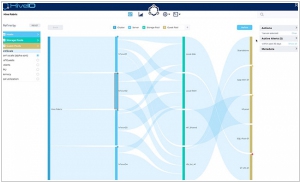
HiveIO has introduced version 7.4 of Hive Fabric, a solution designed for Artificial Intelligence (AI) capabilities. This solution enables organizations to deploy virtualization technology without the complexities associated with multiple vendors or the necessity for specialized personnel. In the latest release, users have the option to enhance the security of the desktop broker by enabling two-factor authentication (2FA), requiring end-users to provide both a password and an additional form of validation to access their desktop. Additionally, the introduction of Gateway Mode allows users to deploy a server or virtual machine (VM) running Hive Fabric in a demilitarized zone, effectively bolstering the overall security of the environment by separating roles and responsibilities for each server. Furthermore, administrators now have the convenience of uploading updates or new versions and applying them across the entire cluster with a single click.
2019. Parallels RAS 17 makes it easy to deliver apps, desktops and data
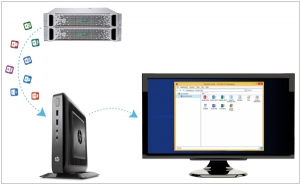
With Parallels' latest release of RAS 17, IT teams can empower employees to access corporate applications and virtual desktops using a wide range of devices. Parallels RAS ensures a productive user experience (UX) for Windows, Linux, Mac, Android, iOS, Chromebook, thin clients, and HTML5 browsers. Even iPhone, iPad, and Android users can leverage familiar native touch gestures to effortlessly work with virtual files, enabling productivity from anywhere. Additionally, the revamped console in Parallels RAS facilitates deployment and management of the entire infrastructure on a unified interface, empowering administrators. Parallels RAS is compatible with diverse infrastructure types such as on-premise, hybrid, or multicloud, including Microsoft Azure and Amazon Web Services. This flexibility allows IT teams and organizations to enhance their agility.
2019. Microsoft launched own Windows Virtual Desktop service
Microsoft has recognized the potential of offering virtual desktop services independently, despite its prior reliance on cloud partners. The introduction of the Windows Virtual Desktop service, now accessible for companies on the Microsoft Azure cloud platform, allows the installation of Windows, Office, and other software licenses on the cloud instead of employees' individual computers. Consequently, employees can access and work with their software through a virtual desktop. This approach offers several advantages. Firstly, it enables even older Windows 7 computers to operate efficiently while providing the benefits of Windows 10. Secondly, it offers convenience to administrators in terms of creating and maintaining new work environments while ensuring security measures. The Windows Virtual Desktop service itself is free, with costs incurred only for additional Azure resources consumed, such as memory and CPU time.
2017. Microsoft Azure shifts its focus to Kubernetes
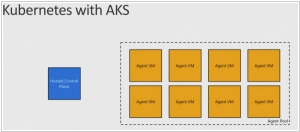
When it comes to container orchestration, Kubernetes is rapidly emerging as the standard of choice, even as Docker Swarm and Mesos/Mesosphere DC/OS carve out their own specific roles. For a considerable period, Microsoft advocated for its managed Azure Container Service (ACS), highlighting its support for multiple orchestration tools. However, there has been a shift in strategy, and Microsoft is now rebranding the service as AKS, with the 'K' representing Kubernetes. While AKS itself is offered at no cost, it's important to note that you still incur charges for the virtual machines (VMs) responsible for running your containers. This differs from the pricing model of the Google Container Engine, which imposes a flat fee per hour and cluster on its platform. While the fee may be relatively small, it's worth noting that it is not entirely free.
2017. Docker offers native Kubernetes support
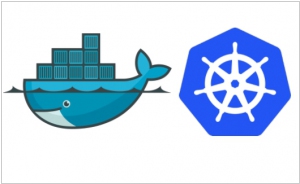
Kubernetes, the open-source tool created by Google, has emerged victorious in the container technology landscape. As a result, Docker has made an announcement to provide native support for Kubernetes. Although Docker is not completely abandoning its own orchestration tool, Docker Swarm, by offering native Kubernetes support for the first time, the company acknowledges the significant adoption of Kubernetes and the necessity to integrate it into their offerings. To mitigate any concerns regarding supporting a competing tool, Docker is introducing an architecture that empowers users to select their preferred orchestration engine at runtime. This means users can choose between Swarm or Kubernetes without requiring any code modifications.
2017. Pivotal, VMware and Google forge container partnership
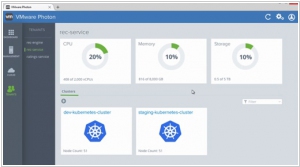
Pivotal, VMware, and Google have joined forces for a containerization initiative aimed at simplifying the creation, deployment, and management of container projects on a large scale. Google brings its open-source container orchestration tool, Kubernetes, to the collaboration. Pivotal contributes the Platform as a Service component with Cloud Foundry, while VMware adds a management layer to seamlessly integrate all the elements. Google will offer this solution as part of the Google Cloud Platform, with Pivotal and VMware incorporating it into their sales strategies. Additionally, there is a possibility that Dell-EMC, the parent company of Pivotal and VMware, might bundle this offering with their hardware products.
2016. Google launches a more scalable and robust Kubernetes

Google has introduced the latest iteration of its open-source orchestration service, Kubernetes, which aids in deploying, scaling, and managing software containers. Version 1.3 of Kubernetes primarily focuses on enhancing scalability and robustness for users managing containers in production environments. Furthermore, Kubernetes now offers support for additional emerging standards, including CoreOS's rkt, as well as standards proposed by the Open Container Initiative (OCI) and Container Network Interface (CNI) initiatives. This update empowers users to establish services that span multiple clusters, extending to multiple cloud platforms if desired. Google highlights that this capability enables the creation of hybrid and multi-cloud scenarios, facilitating the development of highly available clusters that exhibit greater resilience against disruptions.
2016. Microsoft expands its support for Docker containers
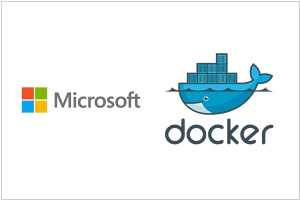
Microsoft has revealed its plans to expand support for Docker containers by integrating them more deeply into several of its enterprise and DevOps tools. Microsoft's keen interest in Docker is well-known, as evidenced by its inclusion of Docker support in the upcoming release of Windows Server and its development of its own Hyper-V container solutions. The company has even demonstrated the ability to run the Linux version of SQL Server in containers on Ubuntu. In line with these efforts, Microsoft has announced that Docker Datacenter, the subscription-based commercial platform offered by Docker, is now accessible through the Azure marketplace. This means that users can easily deploy and run a supported version of Docker on Azure.
2016. Docker acquired cloud infrastructure startup Unikernel Systems
Containers management startup Docker has made an announcement regarding the acquisition of Unikernel Systems, a startup dedicated to democratizing unikernels for developers. Docker intends to incorporate support for unikernels into its own tools and services, expanding its focus beyond containers to facilitate the creation of highly efficient microservices architectures. The financial details of the acquisition were not disclosed. Unikernels operate on the principle of streamlining the operating system to its bare essentials, enabling it to exclusively run a specific application without any unnecessary components. This approach involves compiling the required libraries directly into the operating system kernel, streamlining the application's execution.
2015. Docker adds new security tools for containers
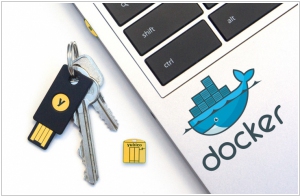
Docker has introduced three new security tools and features designed to enhance container security while maintaining a seamless developer workflow. These advancements aim to provide a safer container environment without disrupting existing practices. The first tool is hardware signing, which enables support for Yubico hardware keys. With this feature, Docker containers no longer require root access, as user namespaces support has been introduced. These two new functionalities are currently available in Docker's experimental release channel. Developers who possess a YubiKey 4 can now leverage automatic container signing to ensure the integrity of their applications throughout the pipeline. Docker collaborated with Yubico to integrate this touch-to-sign code signing system directly into the Docker command line tools. Additionally, Docker has made a significant commitment to security by initiating regular scanning of approximately 90 official repositories within the Docker Hub. This proactive measure allows Docker to identify potential vulnerabilities and publish its findings to ensure a more secure container ecosystem.
2015. Google Container Engine now supports the latest version of Kubernetes
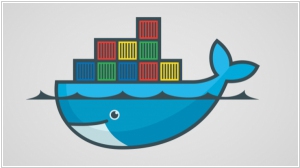
Google has unveiled updates to its Container Engine, a service designed to automate the management of clusters for container deployments. The latest version of Kubernetes (version 1.1) is now supported, bringing a range of performance enhancements that are accessible to Container Engine users. Notably, Container Engine now includes horizontal pod autoscaling, allowing for the addition of more servers to the cluster when necessary. Additionally, developers can leverage the newly introduced HTTP load balancer to direct traffic to different Kubernetes services based on traffic patterns. Google's team has also restructured the networking system with a focus on improving speed. This involved implementing native iptables into Container Engine, resulting in a significant reduction in CPU overhead and an enhancement in reliability, as stated by Google.
2015. Parallels Desktop 11 brings Cortana to Mac
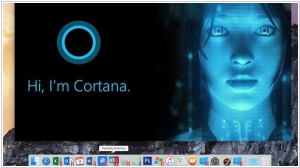
The latest version of Parallels Desktop 11 for Mac introduces the integration of Cortana, Microsoft's digital assistant, into the OS X desktop environment. With Parallels Desktop 11 for Mac, you can run a virtualized version of Windows 10 and have Cortana seamlessly interact with your Mac. By simply saying "Hey, Cortana," the assistant can appear from the OS X dock. Cortana can be used just as you would on a Windows device, providing access to news, weather updates, web search, and the ability to launch Mac applications. Additionally, Parallels Desktop 11 brings the Windows Notification center to the Mac desktop, appearing from the side of the screen similar to its functionality on Windows 10. Furthermore, the update also incorporates Mac features into the virtualized Windows system, including Quick Look, which can be accessed by pressing the space bar. Moreover, if you have a MacBook equipped with a Force Touch-enabled touchpad, you can utilize it to quickly access word definitions in Microsoft Word for Windows.
2015. Virtual desktop service Workspot raised $5 million
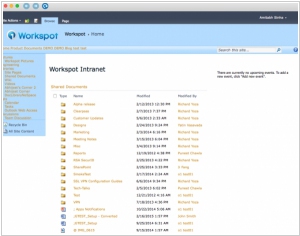
Workspot, the virtual desktop startup, has secured $5 million in new funding, which it plans to utilize for technological advancements and expanding its enterprise sales team. In addition, Workspot aims to increase its user base among existing clients, including mid-sized and Fortune 500 companies. While other SaaS companies offer virtual desktop software that enables employees to access company applications and documents from personal computers, Workspot distinguishes itself by allowing clients to utilize its platform without the need for installing new servers or cloud infrastructure. In contrast, its major competitor, Amazon WorkSpaces, relies on Amazon Web Services and necessitates IT departments to migrate their software and data into the AWS cloud.
2015. Docker makes containers more portable, wants to develop Common Container Standard
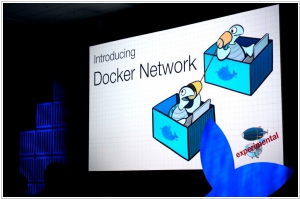
Docker is introducing several updates to enhance its software container solution. The most significant announcement is the introduction of the Open Container Project. This initiative aims to establish a standardized container format and runtime, supported by major industry players such as Docker, CoreOS, Microsoft, Google, Amazon, RedHat, and VMware. The Linux Foundation oversees this project, bringing together various stakeholders in the container ecosystem. Another notable addition is the Docker networking stack, which enables developers to seamlessly migrate their networked Docker containers across different platforms without the need to recreate the network infrastructure. This feature is largely influenced by Docker's acquisition of SocketPlane and the valuable feedback received from networking partners. SocketPlane provided developers with a software-defined networking layer that facilitates seamless connectivity among containers. As a result, Docker-based applications can effectively communicate across various networks and maintain portability across diverse network infrastructures.
2015. Docker raised $95M to fuel its cloud container platform
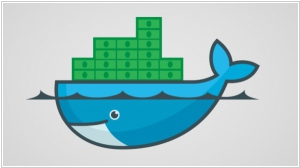
Docker, the company that played a significant role in popularizing containerization two years ago, has recently secured an additional funding of $95 million. The decision to raise this round of funding was driven by the company's commitment to meeting the growing demand from enterprises. Docker's strong buying intention score, as revealed in a recent Enterprise Technology Report surveying 685 enterprise CIOs, showcased its appeal among the respondents and marked the highest score recorded in the survey's six-year history. Notably, Docker Hub's ongoing beta phase boasts the participation of numerous Fortune 100 companies, accounting for approximately 50 percent of the current user base. The company is currently making substantial investments in both its go-to-market strategy and technology stack. This includes expanding the platform's capabilities by focusing on networking, security, and storage tools to enhance its service offering.
2015. CoreOS launches Tectonic to bring Kubernetes to the Enterprise
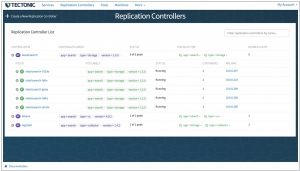
CoreOS, a Linux distribution primarily focused on Docker and designed for large-scale server deployments, has announced the successful completion of a $12 million funding round led by Google Ventures. Alongside this investment, CoreOS is introducing Tectonic, a new commercial distribution that combines CoreOS with Google's open-source Kubernetes container management and orchestration tools. This development positions CoreOS as the first company to offer a fully supported enterprise version of Kubernetes. Currently, the new distribution is exclusively available to a select group of beta users, aiming to simplify the transition to a distributed and container-based infrastructure for enterprises. It is noteworthy that Google has been supporting CoreOS on its Compute Engine service for approximately a year. Given Google's recent emphasis on containers within its cloud platform, partnering with and investing in CoreOS aligns with the search giant's strategy to compete with Amazon and Microsoft in attracting startups and forward-thinking enterprises to adopt its platform.
2015. Citrix acquired data storage virtualization startup Sanbolic
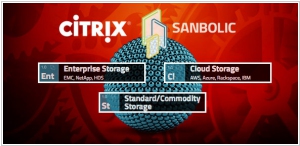
Virtualization leader Citrix has recently acquired Sanbolic, a specialized provider of virtual storage optimization services. This strategic move fills a crucial gap in Citrix's virtualization product portfolio, strengthening its overall offering. Sanbolic has a strong synergy with Citrix's desktop virtualization technology and was already regarded as a valuable partner prior to the acquisition, making this deal a logical step forward. By joining forces with Sanbolic, Citrix gains access to a unique set of capabilities, notably the ability to create software-defined storage pools and efficiently distribute storage across networks, even in situations where the nodes are geographically dispersed. This acquisition enhances Citrix's ability to deliver advanced virtualization solutions, further solidifying its market position.
2014. Docker launches its first commercial product
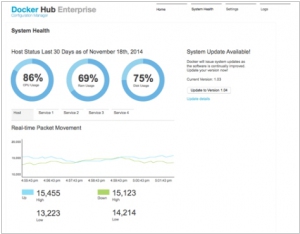
Container technology provider Docker has unveiled its inaugural commercial offering called Docker Hub Enterprise, which serves as a ready-to-use solution installable within a company's firewall. This product caters specifically to security-conscious organizations, particularly those in the financial services sector, by offering a starting point for implementing Docker in their enterprise environments. Notably, Docker has partnered with major industry players such as Amazon Web Services, IBM, and Microsoft. Additionally, Docker has introduced three new orchestration tools: Docker Machine, Docker Swarm, and Docker Composer. These tools streamline container management by providing prebuilt functionalities that simplify tasks previously requiring manual handling. In an additional collaboration, Docker has entered into a reseller agreement with IBM, allowing IBM to sell Docker products as a part of their offerings.
2014. CoreOS invented the new container technology to fight Docker
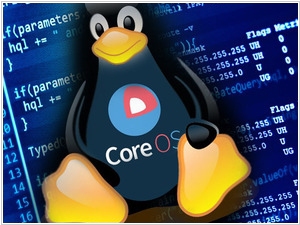
In recent months, the container technology provider Docker has been steadily establishing itself as the dominant standard in the field. However, CoreOS, a specialist in Linux operating systems, has now introduced its own competitive technology called Rocket, potentially triggering a container-standardization battle between the two companies. CoreOS argues that Docker's focus on developing enterprise-oriented features has led to a loss of emphasis on ensuring the core container technology remains lightweight and portable. Consequently, Docker finds itself in competition with container-management-and-orchestration services like Google's Kubernetes and the recently launched Amazon EC2 Container service. Rocket, similar to Docker, functions as a container engine but does not include the additional features that Docker has been developing to enhance its enterprise-friendliness. These features encompass tools for cloud server deployment, clustering capabilities, and networking functionalities.
2014. Microsoft puts Docker on Windows desktops
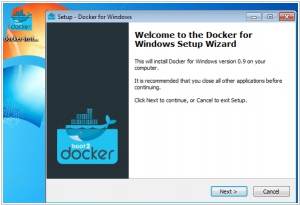
Microsoft users now have the ability to utilize Docker within a Windows environment and manage containers based on Linux using the new Docker Command Line Interface for Windows. Previously, there was no standardized method for running Docker on Windows, requiring developers to either rely on a Linux-based client CLI or use the boot2docker application, which sets up a customized virtual machine on a Windows machine containing the Docker daemon. Furthermore, Microsoft has introduced a Docker image for ASP.NET, now accessible on the Docker Hub. This development follows Microsoft and Docker's recent collaboration to ensure seamless integration of Docker with the Azure cloud and Windows Server.
2014. Docker acquires testing-centric startup Koality
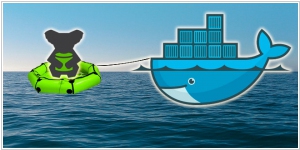
Cloud container platform Docker has acquired the startup Koality, aligning with its goal of simplifying application development through containers. Koality specializes in continuous integration (CI), a development practice that involves rigorous testing of a codebase to ensure the stability of software when deployed. The acquisition is a strategic move by Docker, as Koality's CI tool can assist developers in generating consistent and reliable code across various cloud servers. By integrating Koality's expertise, Docker aims to further enhance the development process and promote seamless application deployment.
2014. Cloud container technology provider Docker gets $40M in funding
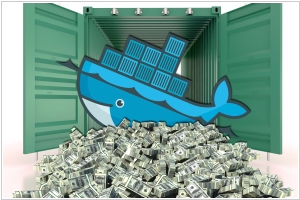
The open source Docker container platform, Docker, has successfully raised $40 million in Series C funding. This substantial investment underlines the significant value attributed to Docker's approach to container technology within both the investor community and the technology industry as a whole. Throughout this summer, the container-management startup has garnered attention from prominent cloud companies such as Google, Microsoft, Amazon, and VMware, who have demonstrated their support by ensuring compatibility between their platforms and Docker's container technology. Docker's platform simplifies the deployment of applications across diverse environments, eliminating concerns about potential conflicts between different application components, such as databases impacting other elements.
2014. Cloud marketplace provider OnApp buys VPS virtualization solution SolusVM
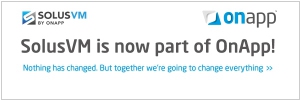
The London-based cloud automation company, OnApp, has acquired SolusVM, a virtual private server management system, with the aim of enhancing the demand for capacity within OnApp's federation. OnApp offers a marketplace that encompasses content delivery network (CDN), storage, and compute capacity. SolusVM, on the other hand, is widely used by numerous small service providers to effectively manage their virtual private servers (VPS). By incorporating SolusVM users into its ecosystem, OnApp aims to stimulate demand within its marketplace. The concept revolves around SolusVM users being presented with the option to not only add additional hypervisors but also to "simply purchase the required resources from OnApp suppliers and provide a combination of their own infrastructure and excess infrastructure to their customers."
2014. Citrix Receiver for Chrome becomes more business-ready
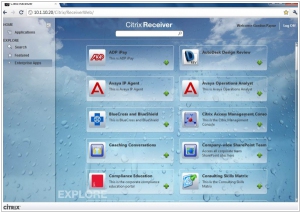
Google and Citrix have collaborated on a new release of the Citrix Receiver for Chrome, aiming to attract more businesses to Google's Chrome OS platform. The updated Receiver enables users to access their virtual apps and desktops through XenDesktop and XenApp on various devices such as smartphones, tablets, PCs, and Macs. With enhanced compatibility with Chrome OS, Receiver for Chrome now allows seamless utilization of Google Cloud Print. Moreover, improvements have been made to ensure better functionality of audio and video playback. Additional features encompass integration with Chrome OS's clipboard across local and remote applications, as well as monitoring capabilities through HDX Insight and support for direct SSL connections.
2014. VMware buys CloudVolumes to deliver apps in real time
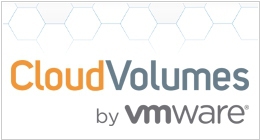
VMware has made the decision to acquire CloudVolumes, a system designed for delivering applications in real-time within virtualized environments. This acquisition aligns well with VMware's Horizon desktop virtualization product. VMware acknowledges that delivering desktop applications to users, particularly in Windows environments, can be a cumbersome and challenging process. The traditional approach of installing and removing applications on a system is often complex and fragile, leading to potential runtime issues like incompatibilities or conflicts with existing applications, which can impede successful application delivery. Overcoming these problems typically requires intricate workarounds, involving scripting or manual intervention. VMware recognizes the need for an improved solution, and CloudVolumes offers precisely that.
2014. VMware's virtual desktops and cartoons for dummies are better than Amazon's
In November of last year, Amazon introduced its virtual desktop service called Amazon WorkSpaces, accompanied by a cartoon video aimed at explaining the benefits of virtual desktops to a wide audience. Today, the prominent virtualization company VMware has responded with its own offering called VMware Horizon Desktop-as-a-Service, accompanied by a similarly engaging cartoon video that highlights the advantages of virtual desktops. Upon comparing the two videos, it becomes apparent that VMware's animation is more visually appealing. Moreover, VMware asserts that its service is considerably more robust and secure, while maintaining the same pricing structure (starting at $35 per month for a single virtual computer). Additionally, VMware emphasizes that their service is already operational, while AWS WorkSpaces is still in a limited preview phase even four months after its launch. VMware Horizon is accessible directly from VMware or through its partner network, which includes various service providers.

